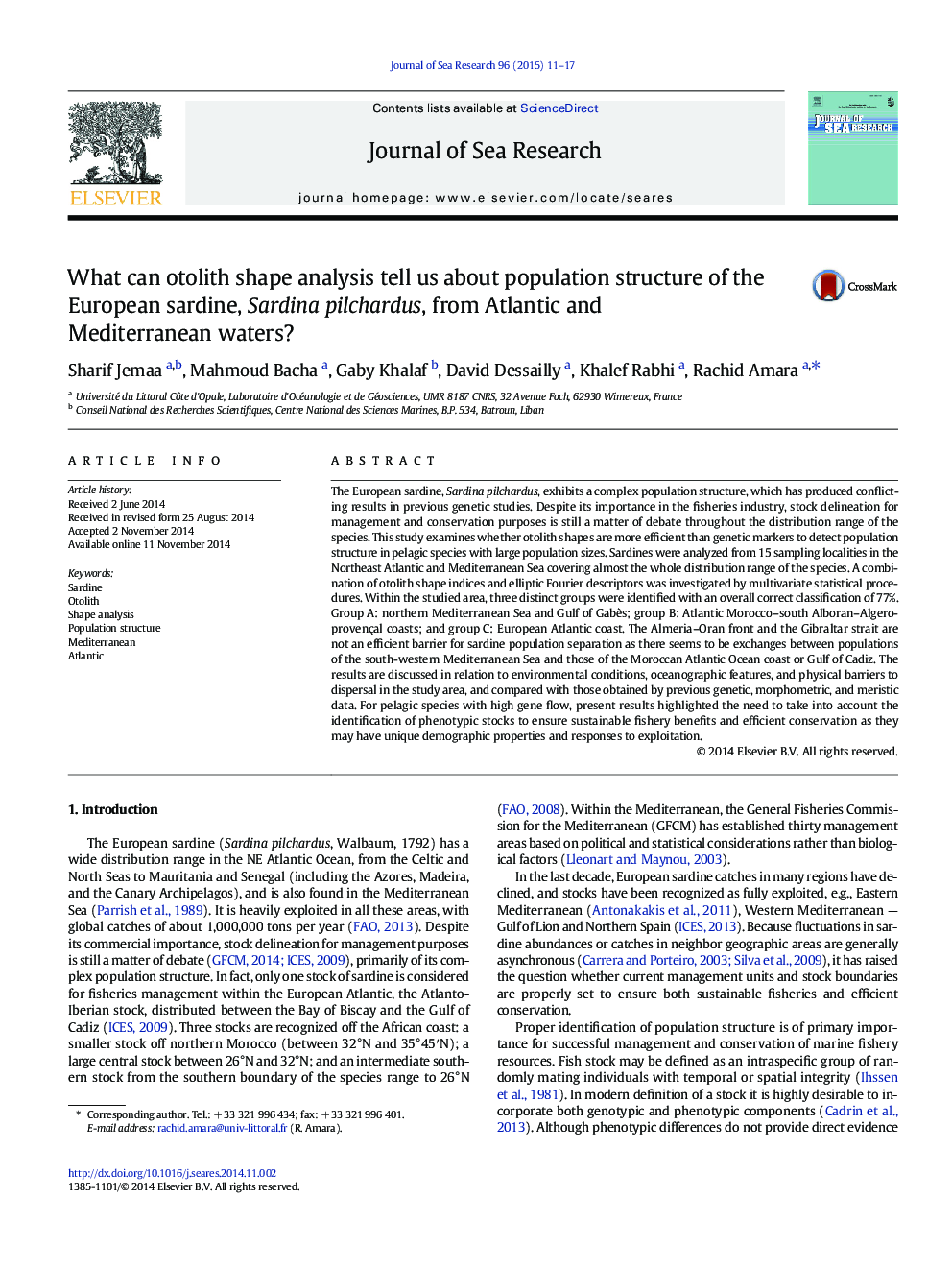| کد مقاله | کد نشریه | سال انتشار | مقاله انگلیسی | نسخه تمام متن |
|---|---|---|---|---|
| 4549664 | 1627478 | 2015 | 7 صفحه PDF | دانلود رایگان |

• We analyzed the population structure of European sardine across its distribution range.
• Otolith shape showed significant variation among locations.
• Three distinct groups were discerned.
• Oceanographic features are not an efficient barrier for sardine population separation.
The European sardine, Sardina pilchardus, exhibits a complex population structure, which has produced conflicting results in previous genetic studies. Despite its importance in the fisheries industry, stock delineation for management and conservation purposes is still a matter of debate throughout the distribution range of the species. This study examines whether otolith shapes are more efficient than genetic markers to detect population structure in pelagic species with large population sizes. Sardines were analyzed from 15 sampling localities in the Northeast Atlantic and Mediterranean Sea covering almost the whole distribution range of the species. A combination of otolith shape indices and elliptic Fourier descriptors was investigated by multivariate statistical procedures. Within the studied area, three distinct groups were identified with an overall correct classification of 77%. Group A: northern Mediterranean Sea and Gulf of Gabès; group B: Atlantic Morocco–south Alboran–Algero-provençal coasts; and group C: European Atlantic coast. The Almeria–Oran front and the Gibraltar strait are not an efficient barrier for sardine population separation as there seems to be exchanges between populations of the south-western Mediterranean Sea and those of the Moroccan Atlantic Ocean coast or Gulf of Cadiz. The results are discussed in relation to environmental conditions, oceanographic features, and physical barriers to dispersal in the study area, and compared with those obtained by previous genetic, morphometric, and meristic data. For pelagic species with high gene flow, present results highlighted the need to take into account the identification of phenotypic stocks to ensure sustainable fishery benefits and efficient conservation as they may have unique demographic properties and responses to exploitation.
Journal: Journal of Sea Research - Volume 96, February 2015, Pages 11–17